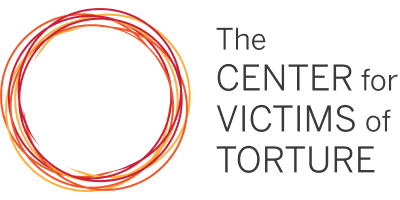CVT clients, staff and interpreters work together every day on clients’ journeys towards rehabilitation. As mentioned in Part 1 of this blog series, CVT’s Karen clients have culturally-specific ways of describing their emotional distress. They often use heart-based idioms, such as expressing that they have a “heavy heart” or a “tired heart.”
In this scenario, the interpreter must find the words to communicate this concept in a way that retains the original meaning and that makes sense to the clinician, often a cultural outsider. The clinician, then, must unpack the meaning of these expressions as it relates to a client’s past trauma history and current experience of suffering and healing.
The process intrigued CVT staff. They wondered, how are idioms of distress being interpreted? How do interpreters deal with expressions that are so culturally bound and may not have exact equivalents in English? To answer these questions, clinical and research staff collaborated to design a small-scale project working with interpreters.
For this project, staff obtained permission to use audio clips of clients describing idioms of distress, and then met with Karen interpreters to listen to clips together discuss the many ways a single phrase could be interpreted.
The graphic below illustrates the research project. During the interview, the client made a statement in Karen, which the interpreter interpreted in the moment as “When I think it, I feel my heart tired. I know that I had to run, so I feel very tired. I would just run and stay in the camps.”
CVT therapist Leora Hudak then met with interpreters and played for them an audio recording of the original statement in Karen. The interpreters had various ways they would have interpreted this statement, ranging from similar to the original translation to rather different (see these displayed below).
The goal was not to “check” whether an interpreter translated a certain phrase correctly; the research team rejects the idea that there is only one way to correctly interpret most cultural statements. Instead, we spoke with interpreters in order to more thoroughly explore the idiomatic phrases used by Karen participants and the different ways these might be interpreted into English.
The research showed that interpreters use many different ways to manage cultural idioms of distress, such as “heavy heart” or “tired heart,” in the moment. Sometimes interpreters interpret the phrase word for word, just as the client stated it, regardless of how the clinician would understand it.
Sometimes they offer a cultural explanation to the provider while they are interpreting (such as to state, “in our culture, we believe…”). Other times they offer a summary or the context of what the client is expressing, rather than giving the exact words. And on occasion they use a western medical expression in lieu of the cultural expression when no exact translation exists, such as substituting “heavy heart” with “depression.”
Following the research findings, CVT staff met again with interpreters in a big group meeting to hear their thoughts on this phenomenon. The consensus was that idioms of distress are interpreted in many different ways.
Interpreters shared their expertise and experience. They reflected on the tension of finding the exact words versus promoting communication and understanding between providers and clients. They emphasized the role of the setting: in a fast-paced medical setting, it is much harder to take the time to work through meaning, so they may choose to interpret in a way the provider will understand. At CVT, they shared, they have longer relationships with clients and providers, allowing more time to build understanding together.
Many factors are at play in these situations. Interpreters don’t only consider cultural context, but religious beliefs, ethical considerations, technical terminology, beliefs about traditional healing, and the role of mind, body, heart, and soul in suffering and healing. From interpreters’ perspectives, one thing rang true: trust on all ends is essential to interpreting for torture survivors.
We continue to analyze these interpretations to develop recommendations. In the meantime, a great benefit of this research project has been a strengthened working relationship between interpreters and CVT staff. This reflects one of the many integral ways that healing occurs at CVT: Each detail, each word or phrase and each individual person involved in a survivor’s healing is regarded with significance.
The Interpreter Project group includes Alyce Eaton, CVT’s former research coordinator; Leora Hudak, MSW, LICSW, psychotherapist with CVT’s Saint Paul Healing Center; and EhTa Zar, client services coordinator for CVT’s Healing Hearts project.
